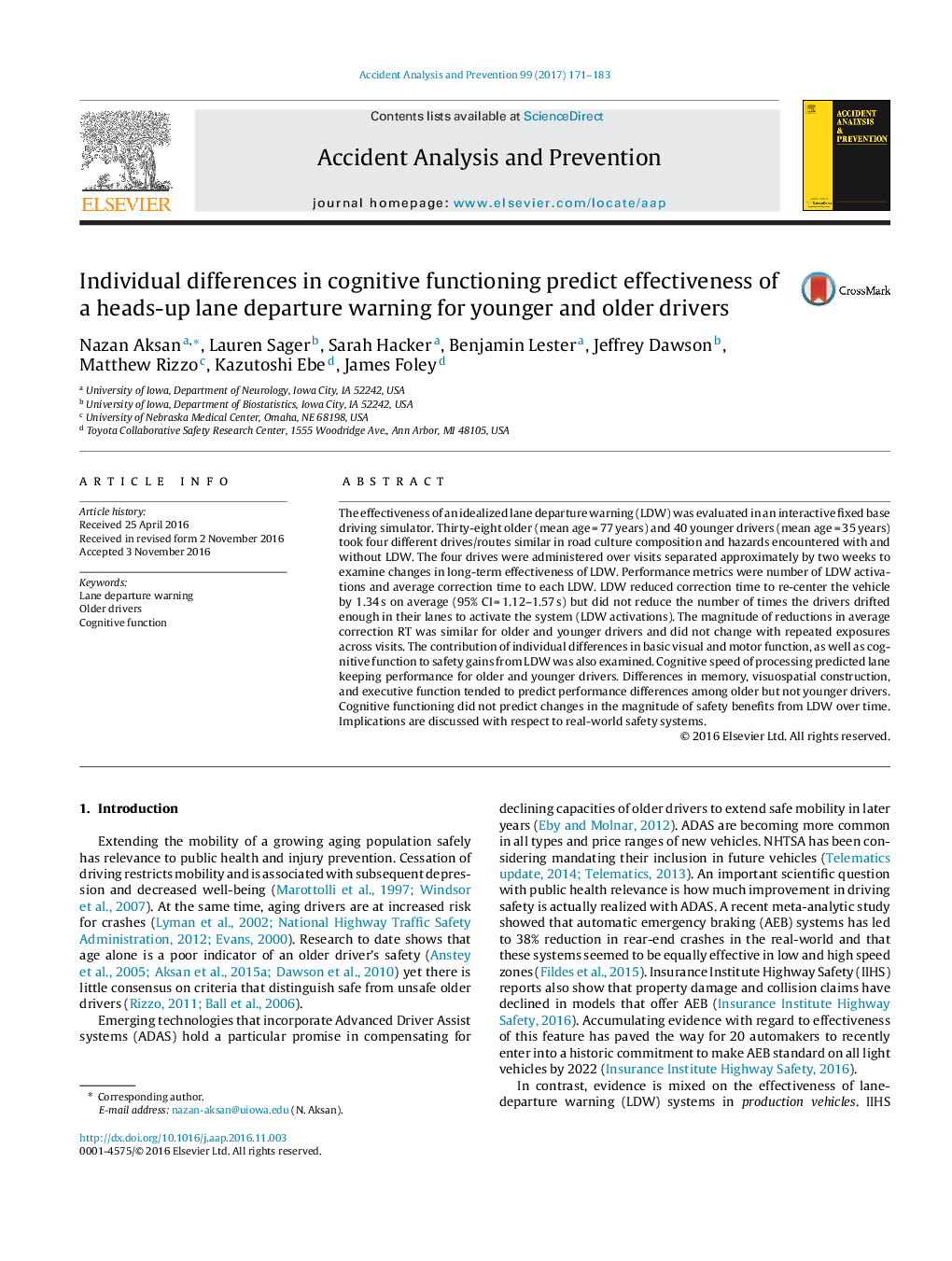| Article ID | Journal | Published Year | Pages | File Type |
|---|---|---|---|---|
| 4978873 | Accident Analysis & Prevention | 2017 | 13 Pages |
Abstract
The effectiveness of an idealized lane departure warning (LDW) was evaluated in an interactive fixed base driving simulator. Thirty-eight older (mean age = 77 years) and 40 younger drivers (mean age = 35 years) took four different drives/routes similar in road culture composition and hazards encountered with and without LDW. The four drives were administered over visits separated approximately by two weeks to examine changes in long-term effectiveness of LDW. Performance metrics were number of LDW activations and average correction time to each LDW. LDW reduced correction time to re-center the vehicle by 1.34 s on average (95% CI = 1.12-1.57 s) but did not reduce the number of times the drivers drifted enough in their lanes to activate the system (LDW activations). The magnitude of reductions in average correction RT was similar for older and younger drivers and did not change with repeated exposures across visits. The contribution of individual differences in basic visual and motor function, as well as cognitive function to safety gains from LDW was also examined. Cognitive speed of processing predicted lane keeping performance for older and younger drivers. Differences in memory, visuospatial construction, and executive function tended to predict performance differences among older but not younger drivers. Cognitive functioning did not predict changes in the magnitude of safety benefits from LDW over time. Implications are discussed with respect to real-world safety systems.
Related Topics
Physical Sciences and Engineering
Chemical Engineering
Chemical Health and Safety
Authors
Nazan Aksan, Lauren Sager, Sarah Hacker, Benjamin Lester, Jeffrey Dawson, Matthew Rizzo, Kazutoshi Ebe, James Foley,
